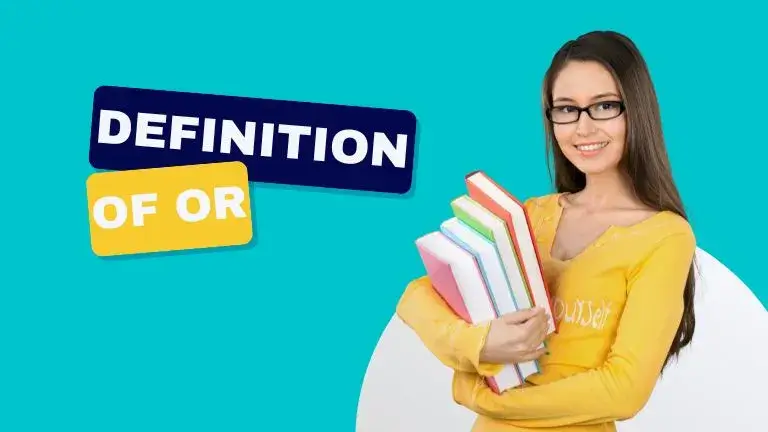Words called conjunctions are used to join phrases, clauses, or sentences that are important to one another in the same context. Conjunctions denote the connection between two or more words, phrases, or sentences. Thus, it can be concluded that “and” and “or” are widely utilized to connect two or more clauses while establishing a relationship.
The difference between and and or is that “or” can be used to indicate the chance of choosing one of the two options while “and” is used to indicate the likelihood of choosing both.
Let us learn the basic difference between and and or in the sentences below:
Table of Contents
Definition of And?

The conjunction “and” links or joins two or more words, phrases, or sentences. It can also be used to start a new clause. It is crucial to use and with care because it can only join one new phrase or word at a time. “And” also offers inclusivity as it is possessive. It contains both of the sentence’s subjects.
For Example:
- He chuckled at that, and his chuckle was joyful and honest.
- She came to a stop and looked up at his face.
- He left the truck parked in front of the residence and started to descend the slope.
- The boy laughed and jumped into the pool.
- She let out a sigh and moved to the window seat.
- Tom handed John and Mary glasses of wine.
- Graphics and excel courses are also available.
- You can find more information and news on our website.
Definition of Or?

Another coordinating conjunction is “or,” which denotes a different relationship. Although these two conjunctions are related, the two clauses in this sentence are not entirely dependent on one another.
Only one of the clauses can be true at a time. Thus, each one must be considered separately. The conjunction “or” is used to link two or more situations, options, or alternatives. “Or” is also used to offer options.
For Example:
- Are you going or not?
- You’ll have a younger brother or sister.
- He had to move quickly, or he would have missed the flight.
- He might easily outlast or overpower her in a fight or chase.
- You can go with her or stay here.
- You can visit your aunt or go to the movies.
- It had to be done now or later.
- Let’s get in line or the bus will be gone.
Read more: What is the Difference Between What and Why?
Difference Between And and Or
The basic difference between and and or are given below:
Coordinating conjunctions like “and” and “or” are used to link related words, phrases, clauses, or sentences. So the primary difference between “and” and or is that and link similar ideas. On the other hand, “Or” links opposing thoughts together in a sentence.
Another difference between and and or is that And typically signifies that you’re combining two ideas into one sentence.
Or signifies that you are providing the other individual (reader, listener, child, speaker, etc.) with a choice between two options.
For instance,
(a) Roland and Robert should go to the meeting.
(b) Roland or Robert ought to show up to the meeting.
Another comparison between or vs. and is that “and” is an inclusive conjunction while or is not.
And Vs. Or
Both “and” and “or” coordinating conjunctions are used to join grammatically equal elements, but each indicates a different relationship between them.
The conjunction “and” links or joins two or more words, phrases, or sentences.
The conjunction “or” links two or more scenarios, options, or alternatives.
In comparison between and vs. or, Or denotes a decision between two situations that could result in two distinct outcomes.
And denotes a combination of two occurrences or options.
Let’s think of instances A and B.
A OR B denotes that only one of the events, A or B, will occur, but A and B indicate that both events occur.
Let’s take an easy example:
A is picking out a yellow scarf, and B is picking out a blue scarf.
Now, if you have to pick a scarf to go with your clothing, you can select either yellow or B, denoted by the symbols A or B.
The two scarves, which can be symbolized as A and B, will be chosen if it is freezing and you need to layer up.
Logics Between Or Vs. And

Logics of true and false between or vs. and are below:
1. The statement can only be true in the conjunction “and” case if both clauses are true. If not, the statement is untrue. For example, the statement will only be recognized accurately, e.g., if the speaker buys both pen and eraser.
If they only buy a pen, the sentence is false because the eraser is missing.
2. When using the conjunction “or,” the statement is true if any one of the clauses is true. The phrase is false if neither of the two conditions is true. The statement is false if they bring both food and games because they indicated they would only bring one item. Similarly, the statement is true if they only bring the games and not the meals.
What is the Difference Between And and Or?
Highlighting the main difference between and and or in the following table:
| And | Or |
|---|---|
| “And” is used to link similar-sounding words, clauses, or sentences that should be read together as a whole. | “Or” is used to connect opposing or contrasting thoughts or ideas |
| Connects two words or phrases. Either all of these concepts must be understood together, or none at all. | Connects two words or phrases. These phrases and words are to be used separately, not combined. |
| Example: The balloon is red and yellow. | Example: The balloon is red or yellow. |
Conclusion
The words and, as well as, or, can be found in nearly every phrase. These conjunctions are necessary for sentences to be clear and smooth. Although they are related, the two clauses in this sentence are not entirely dependent on one another.
The difference between and and or is that “and” denotes a function where both criteria are satisfied. While “or” denotes a function where just one of the two criteria is satisfied.
Learn more: What is the Difference Between How and Why?

